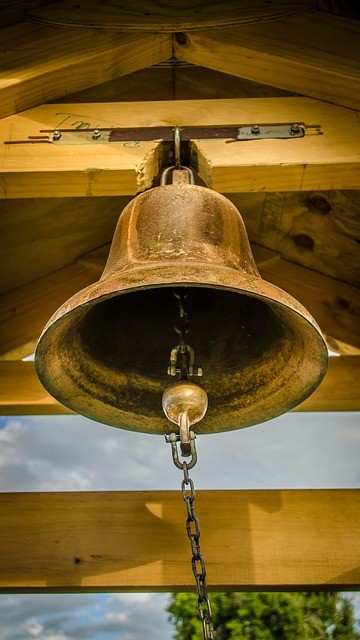In 1751, a large bell, called the Liberty Bell, was hung in the new Independence Hall of the Pennsylvania Provincial Assembly. Unfortunately, it cracked during the test strike and had to be recast twice. It was said that the bell was too brittle and couldn’t keep a loud, smooth sound for long. This wasn’t an isolated case, though. Around the world, many old bells can be seen with similar cracks found on the Liberty Bell.
The Big Question: Why Was the Bell Brittle?
Apparently, there’s more to making a bell than just melting and casting metal. There’s choosing the right metals to combine, deciding the amount of each metal in the alloy, and making the perfect cast. The first part of the process alone can be nerve-wracking, especially if you don’t have prior experience in metallurgy or at least in alloying metals.
What Most Bells Are Made Of
Most bells are made of bronze, an alloy of copper and tin. If you’re wondering why bell makers choose bronze over other metals that are just as tough and resilient, well, it has to do with bronze’s distinct properties. Of all the known metals and their alloys, bronze creates the best sound and resonance, and the sound it creates in one strike can last for a few seconds. This feature is what people expect from a bell.
Why Bronze Makes the Best Sound
Each metal has a unique property that makes it valuable for certain applications. When combined with other metals, the unique properties of all the metals in the alloy get combined as well. This process takes place at the molecular level. If you look at the molecular structure of bronze through an electron microscope, you will see the atoms of copper and tin arranged in a highly ordered structure, called crystal. This arrangement is responsible for bronze’s ability to create a beautiful sound.
A typical bell has about 78 percent copper and 22 percent tin, a ratio that only changes when small amounts of other metals, such as zinc, iron, and lead are added. The role of each metal in the alloy is to fill in the gap that prevents the bell from resonating sound. For instance, copper (being too soft) would only cave in when stroke hard. So it needs tin atoms to fill the weak spots of its crystal so that instead of collapsing, it reverberates the sound the strike creates.
These unique properties of bronze make it a perfect material not only for making bells but also for making other musical instruments that produce sound through vibration, such as cymbals. What make it even more preferable for such purpose is its outstanding malleability. In metallurgy, malleability is the ability of a metal to be flattened into sheets by rolling or hammering without breaking. Bronze’s malleability allows it to be reduced to thin sheets without losing any of its original properties.
Today, bronze sheet metal is used for many other applications, not just for making bells and other musical instruments. It is seen used for plating furniture and design items to produce a rustic vibe and it has multiple industrial applications as well. If you are looking for high-quality bronze sheets, reputable suppliers like Rotax Metals can definitely help you.
About Rotax Metals
Rotax Metals is a go-to resource for the highest quality copper, brass, and bronze sheets, bars, and tubes. We serve professionals and businesses from virtually all industries that need first-class metals for their project. Having successfully led the metal supply industry in North America for over seven decades, we are confident that we can meet your needs and exceed your expectations. Whether you are an artisan, builder, designer, or supplier, we are looking forward to working with you soon.
Sources:
Why is the Liberty Bell cracked?, History.com
Metallurgy of Bronze Bells and Castings, phase-trans.msm.cam.ac.uk


